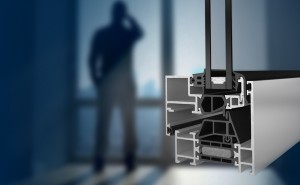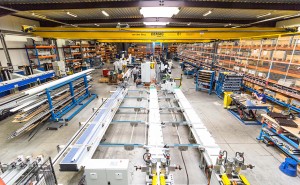Sustainability and environmental awareness are buzzwords in the construction sector. These factors largely determine the chosen glazing and window profiles. Current legislation reflects that trend. Most governments impose double glazing as the default. Some countries take one step further and resolutely opt to promote triple glazing.

Triple glazing: the future
The Scandinavian countries and Germany have been at the forefront of this trend for some time. These northern European nations impose stringent requirements on energy-efficient construction and recommend the use of triple glazing. Other countries are less strict, opting to indicate minimum obligatory effort rather than specify ideal objectives.
In the most recent update of the Building Regulations (2016), the British government has included a target for thermal insulation in buildings: an U-value of 1.6 W/m2K or lower. As a bare minimum, double glazing must be installed (and preferably very high quality, too!), both when fitting new windows and when replacing existing windows. Although these regulations do not expressly refer to triple glazing, the ambitious target figure for thermal insulation should make it a serious consideration, especially for new buildings.
We can see a similar trend in France and Belgium. In Flanders, the windows of all houses must have at least double glazing from 2020 onwards (take note of the phrase ‘at least’). This obligation applies to the living areas, kitchens, bedrooms and bathrooms of a home. New structures must achieve near energy-neutral standards before 2021, with the target for glazing and profiles set at 1.5 W/m2K. That target is very close to the values achieved by triple glazing.
Equivalent to an insulated exterior wall
How is it different from double glazing? Triple glazing is made using the same principle, but includes an additional sheet of glass, an extra cavity filled with Argon or Krypton, and possibly an additional layer of metal coating (2 instead of 1). Thanks to this extra insulation, the U-value of triple glazing easily drops below 1. Some manufacturers even list an U-value of 0.5 W/m2K. Such figures approach the insulation value of an insulated exterior wall. With that standard of insulation, there’s no longer any need to assume that windows are the weak point in home insulation.
However, there is an important caveat. Triple glazing is significantly more expensive than double glazing. Possibly even over 30% more. The question is whether this additional investment can be recouped, especially if you know that triple glazing will only achieve maximum efficiency once the rest of the house has also been insulated effectively.
The effect of triple glazing is largely cancelled out, for example, if it is not combined with window profiles that achieve excellent insulation performance. High-quality profiles are not a luxury, but a necessity. Profile materials include wood, PVC and aluminium. Aluminium profiles do need to include thermal breaks. Aluminium profiles insulated with thermal breaks are an excellent choice, if they have been manufactured properly – which is certainly the case when they are produced using the Aluroller EVO delivered by Aluro. These profiles require minimal maintenance, are very durable, and provide excellent acoustic and thermal insulation.
Triple glazing in combination with the right profiles is the best option if your entire house has been perfectly insulated, as is the case for passive houses. Since governments are introducing a range of initiatives promoting effective and comprehensive insulation of your home, triple glazing is clearly the best option for the future.
- Peter De Roovere



Leave a comment